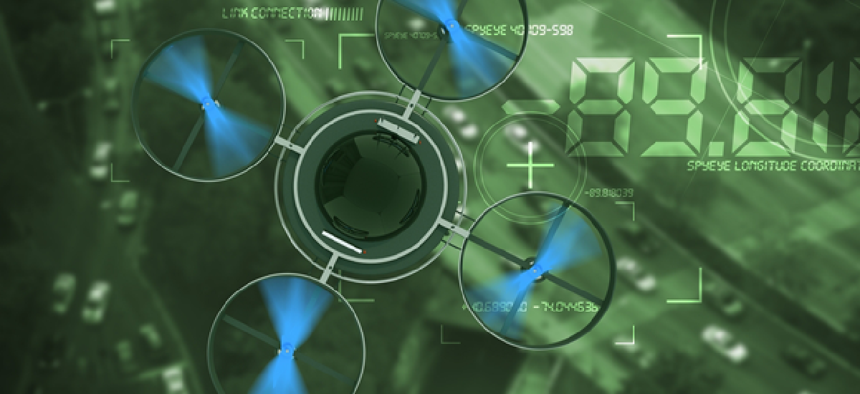When drones can regulate themselves


Connecting state and local government leaders
Industry experts recently explained to lawmakers how unmanned aerial systems technology can ease the challenges of integrating drones into the national airspace.
There are widespread concerns about the appropriate level of regulation for unmanned aerial systems -- the Federal Aviation Administration just this week released recommendations that call for registration of all but the smallest drones. Yet UAS themselves could soon include the technologies that will help regulate them. That’s according to industry experts who recently testified before the House Energy and Commerce subcommittee on Commerce, Manufacturing and Trade.
“It has become increasingly clear to us that [unmanned aerial vehicles], like cars and watches, are a computing platform of the future, said Intel Corp’s Joshua Walden, in his prepared testimony – a sentiment that was echoed by others. Adoption of a “flexible regulatory system” for UAVs will encourage development of these flying platforms will sustain U.S. industry leadership, Walden said.
Enabling "sense and avoid" technology is one of the most pressing challenges standing in the way of more widespread and safer adoption of drones, said Brian Wynne, president and CEO of the Association for Unmanned Vehicle Systems International. Other technologies that need to be incorporated into all drones in the national airspace, he said, include collision avoidance, secure geofencing and command and control.
Geofencing is already being built into some drones, which in effect establishes a no-fly zone. In fact, DJI, a manufacturer of commercial drones, recently announced that it will include geofencing and location software in all of its UAVs, giving drone operators “access to live information on temporary flight restrictions due to forest fires, major stadium events, VIP travel and other changing circumstances.” The system would also restrict flights around prisons, power plants and other sensitive areas where drone operations raise security concerns.
Regarding the continued integration of these systems and their effects on privacy, Margot Kaminski, assistant professor of law at Ohio State equated the current struggle over drone regulation to earlier debates over online file sharing. “Not all technological changes should drive legislation,” she said in her testimony. “But where a technology significantly lowers the cost of committing a harm, lawmakers often and justifiably step in to raise costs again. We saw this in the early days of online file sharing, and we are seeing it today in state regulation of drones.”
NEXT STORY: What’s Next for Louisville’s Digital Team?




